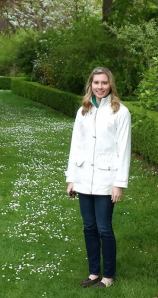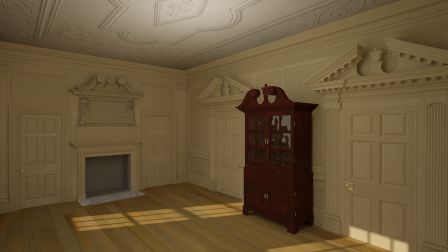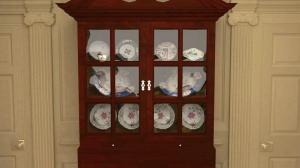Voted the Best Place to See by Condé Nast Traveler.


Drayton Hall’s curator of historic architectural resources, Trish Smith, traveled to Paris for a conference on 3D visualization technology.
Pompeii, Versailles, Karnak, the Roman Forum. Would you believe that all of these places share an exciting connection with Drayton Hall? In April, Drayton Hall’s curator of historic architectural resources, Trish Smith, traveled to Paris for a conference that brought cultural heritage professionals from around the world to share new innovations in 3D visualization technology. In the past year, Drayton Hall has joined the ranks of these world-class sites by using technology to bring history to life with stunning 3D restorations and interactive virtual environments.
Our commitment to preserving the house in its current state precludes us from undertaking restoration projects or displaying our acclaimed collections in the unconditioned space, but this technology enables us to do both—digitally. Among the things you’ll see in the 3D models are the finest example of furniture to survive from Colonial America and a piece of case furniture that no longer exists but was depicted in an 1840s sketch. We’ve used 3D technology to transform this piece from a 170-year-old pencil sketch into a three dimensional image of the cabinet filled with ceramics from our collection. These computer-generated pieces are placed in a 3D model of the house which is being digitally restored to its original condition with the help of discoveries made over forty years of research at Drayton Hall.

Trish Smith’s latest work includes a 3D rendering of Drayton Hall’s Withdrawing Room with a piece of case furniture.

Among the things you’ll see in the 3D models are the finest example of furniture to survive from Colonial America and a piece of case furniture that no longer exists but was depicted in an 1840s sketch. We’ve used 3D technology to transform this piece from a 170-year-old pencil sketch into a three dimensional image of the cabinet filled with ceramics from our collection.
For decades our means of sharing such discoveries with the public was limited by our preservation philosophy as well as our lack of museum space, but 3D visualization technology makes it possible to maintain the authenticity of the house in its present state while allowing visitors see the house fully restored and furnished once again. Encouraged by the early success of this project and a desire to understand the latest developments, Trish Smith traveled to Paris to learn from some of the most accomplished professionals working at the most famous historic sites in the world.
Hundreds of attendees from various cultural heritage disciplines attended the Paris conference hosted by CAA, an international organization that convenes annually to foster discussion about computer science and mathematical applications in archaeology and architectural history. This was the first year that a representative from Drayton Hall was in attendance, and the opportunity to learn and share ideas with professionals from around the world was tremendous. One presenter discussed a project that uses heat signatures to piece together broken fragments of the terracotta warriors and horses in China. Another team shared their innovative method of capturing 360 degree views of all of the columns at the Karnak Temple Complex in Luxor, Egypt; and several sessions ended with lively discussions about historic sites that are successfully creating video games and virtual demonstrations to engage students online.
The opportunity to take part in such a conference comes at a pivotal time as news of Drayton Hall’s 3D renderings spreads and we further our commitment to embracing this technology. Recently, Drayton Hall was awarded an innovation grant by the National Trust for Historic Preservation for the purchase of 3D scanning equipment that will make it possible to capture architectural elements, furniture, and artifacts in greater detail. With our new 3D scanning capabilities and an expanded network of colleagues to help us navigate this digital frontier, we will look back on the 2014 CAA Conference in Paris as the beginning of a new wave of exciting digital offerings from Drayton Hall.